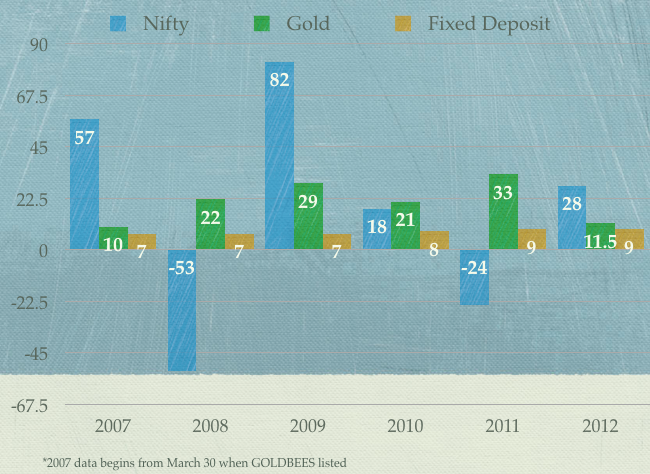This post is written by Shiv Kukreja, who is a Certified Financial Planner and runs a financial planning firm, Ojas Capital in Delhi/NCR. He can be reached at skukreja@investitude.co.in
A few days ago when the CARE IPO was about to get opened, Rakesh got confused about the “Offer for Sale†process through which the share sale was to happen. He wanted to know whether the procedure to apply for CARE shares was to be same like normal IPO or something different.
To know more about it, TCB asked me to share the process details.
TCB
December 19, 2012 at 7:50 am
Dear Shiv,Can you please give details about the procedure for Offer For Sale (OFS) of Hindustan Copper, ONGC, NMDC etc. ? As you correctly said, this OFS is different from CARE Offer For Sale.I would like to know details like how to apply, how & when to pay, how & when is allotment done, what is the meaning of terminologies like indicative price, during the offer from where can we monitor the quantity and price of bids received etc.Thanks
Here is my attempt to let people understand the Offer for Sale process. Please leave your comments in case I miss something or you find any discrepancy in the post.
Poor economic growth causes poor investment sentiment which results in poor market conditions and thus forces corporates to cost cutting. In another attempt to save some unnecessary costs and to reduce the time taken to raise money, SEBI has introduced a new process called Offer for Sale (OFS).
Offer for Sale is getting really popular with the companies and as many as eight companies, like NMDC, Hindustan Copper, Eros International, Blue Dart, Honeywell Automation etc., have taken this route to either raise money from the markets or to increase non-promoter shareholding in order to comply with the minimum public shareholding guidelines.
What is “Offer for Sale†and can retail investors participate in the process?
Offer for Sale (OFS) is another form of share sale, very much similar to Follow-On Public Offer (FPO). OFS mechanism facilitates the promoters of an already listed company to sell or dilute their existing shareholdings through an exchange based bidding platform.
Except the promoters of the company, all market participants like individuals, mutual funds, foreign institutional investors (FIIs), insurance companies, corporates, other qualified institutional bidders (QIBs), HUFs etc. can bid/participate in the OFS process or buy the shares. The promoters of the company can only participate as the sellers in the process.
OFS Process
First of all, very basic, you need to compulsorily have a demat/trading account(s) and permanent account number (PAN) to participate in an Offer for Sale. The sellers are required to deposit the offered shares with the exchange before 11.00 a.m. on T–1 day, where ‘T’ is the day of OFS.
Once the OFS starts, you can participate in the process yourself using your online trading accounts like ICICI Direct, Kotak Securities etc. by placing your bids under the ‘OFS’ section of their respective broking websites.
Investors, who do not have online trading accounts, can place their bids by directing the dealer of their broking company to do it on their behalf. You can modify or cancel your bids during the offer timings except in the last 60 minutes i.e. till 2:30 p.m.
The exchange will announce the “Indicative Price†only during the last 60 minutes of the OFS. Indicative Price is the volume weighted average price of all the valid/confirmed bids. e.g. There are total 1000 shares in an offer for sale with Rs. 200 as the floor price. If the investors bid for 200 shares at Rs. 210 and 800 shares at Rs. 200, the indicative price for the offer would be [(200*210)+(800*200)]/1000 = Rs. 202.
No leverage is provided to the investors against the stock margin available in the trading accounts and thus, they are required to deposit 100% of the order value in cash to bid for it. Also, the funds allocated for OFS cannot be utilised for other investment purposes or against any other obligation of the trading member.
Once the bidding gets over, allotment price is fixed and allocation is done. The successful bidders will be allotted shares directly into their demat account on T+1 basis the very next day. In case of partial allotment or no allotment, the refunds will be made on the same day itself. This makes the OFS process really fast, just like buying shares of the company from the open market.
During the offer timings or once the offer gets completed, you can monitor the quantity and price of bids received etc. from this link of NSE, like it has the details of the OFS of Eros International Media Limited which got concluded on December 20th.
Allocation Methodology and Contract Notes
The companies can adopt one of the two methodologies for allocating the shares on offer i.e. either on a price-priority basis at multiple clearing prices or on a proportionate basis at a single clearing price.
Like you get the contract notes by the evening of the trading day on which you buy shares of a company, you’ll get a contract note in the same format when you buy shares in an OFS. Contract note will have the details of your bid price and the quantity allotted in the specified format.
What differentiates Offer for Sale (OFS) process from IPOs/FPOs?
Physical Application: Unlike IPOs/FPOs, no physical application forms are issued to apply for shares in the OFS process. OFS process is completely platform based.
Time Period: While IPOs/FPOs remain open for 3-4 days, OFS gets over in a single trading day as the markets gets closed for trading at 3:30 p.m.
Price Band: Under IPOs/FPOs, there is a price band in which the investors need to bid for the shares or simply give their consent to buy the shares at the “Cut-Off†price. With OFS, there is a “Floor Priceâ€. As the name suggests, it is the minimum price at which you can bid for the shares under OFS. You will not be able to place an order below the floor price as it will not be accepted by the system.
Though it is not mandatory to disclose the floor price before the issue opens, the promoters usually disclose it prior to the share sale in almost all of the issues. Alternatively, the promoters can submit the floor price in a sealed envelope to the exchange which will be disclosed post closure of the offer. In case the floor price is not disclosed to the public, the investors can place their bids at any price they want.
Charges: Investors are not required to pay any kind of charges over and above the ‘Fixed Price’ in an IPO or FPO. But, the OFS process involve certain transaction charges including the brokerage, Securities Transaction Tax (STT) and other charges, which the investors normally pay when they buy shares of a company in the cash market.
On the OFS day, normal trading in the shares of the company will continue even when the bidding process is ‘ON’. The investors have the option to either buy the shares of the company in the normal market or place their bids for the shares on sale in the OFS. The investors can place only ‘Limit’ orders under the OFS facility as ‘Market’ orders are not allowed.
OFS process has the following advantages over FPOs/IPOs:
Cost effective: I think this is the biggest reason for the promoters to sell their stake through the OFS route. OFS route involves very less formalities. Unlike IPOs/FPOs, the promoters of the issue under OFS are not required to file Draft Red Herring Prospectus (DRHP). Also, there is no need to get the application forms printed. It also saves big advertisement expenses.
Saves Time: This route involves sale of shares in a single trading day and that too, during the normal trading hours i.e. between 9:15 a.m. and 3:30 p.m. The promoters can announce their intention of share sale even one trading day prior to the opening of the offer.
Transparency: Retail investors have suffered losses in the past due to manipulation in IPO/FPO allotment. OFS process is quite transparent as it is done on real-time basis with a system based bidding platform and involves least amount of paperwork.
Multiple Orders: Under OFS, there is no restriction on number of bids from a single buyer. This facility is not available in FPOs/IPOs.
The formats are changing rapidly. One-day cricket is fast losing its appeal to T-20 matches. Similarly, 3-4 days long FPOs are getting replaced by these single-trading day Offers for Sale. Very few people read the DRHP or printed details on application forms while investing. So, in a way, these OFS will reduce the issue costs to a large extent. But, will the investors be able to make wise investment decisions in these OFS? Just wait and watch.




